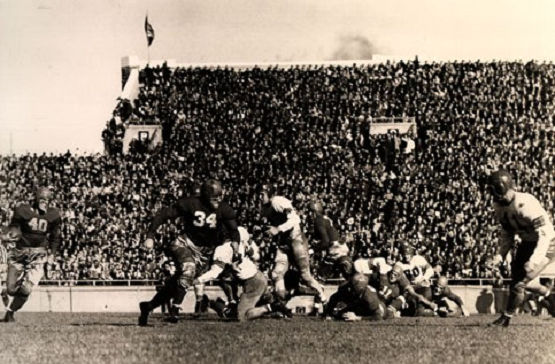


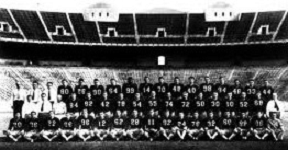
| Fort Knox | 59-0 | |
| Indiana (7-3) | 32-21 | #23 |
| Southern Cal (5-5-1) | 28-12 | #25 |
| Purdue (1-8) | 26-0 | |
| at Northwestern (1-9) | 20-6 | |
| at Wisconsin (8-1-1) | 7-17 | #3 |
| Pittsburgh (3-6) | 59-19 | |
| Illinois (6-4) | 44-20 | #20 |
| Michigan (7-3) | 21-7 | #9 |
| Iowa Pre-Flight (7-3) | 41-12 | (#21) |
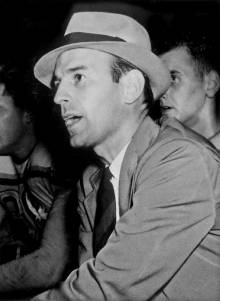 Ohio
State had been a minor team playing mostly other minor Ohio schools
through 1912. In that time, they did not defeat a Western Conference
(Big 10) opponent, though they tied Illinois and Indiana in 1902 and
Michigan in 1910 (Hall of Famer Howard Jones was OSU's coach in 1910).
They did defeat Vanderbilt, a Southern powerhouse at the time, in 1908
and 1909.
Ohio
State had been a minor team playing mostly other minor Ohio schools
through 1912. In that time, they did not defeat a Western Conference
(Big 10) opponent, though they tied Illinois and Indiana in 1902 and
Michigan in 1910 (Hall of Famer Howard Jones was OSU's coach in 1910).
They did defeat Vanderbilt, a Southern powerhouse at the time, in 1908
and 1909.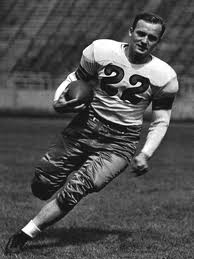
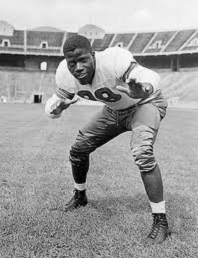
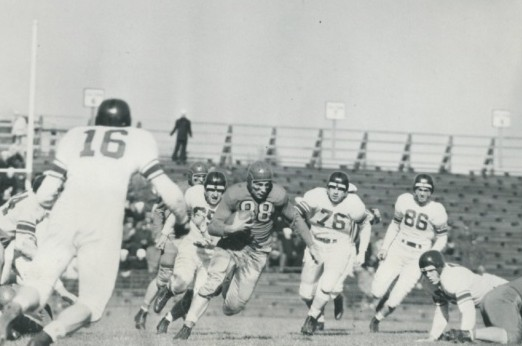
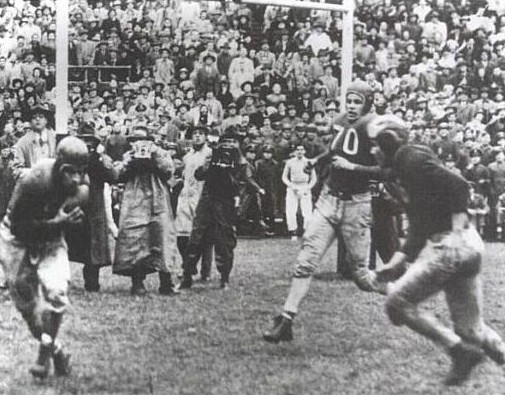
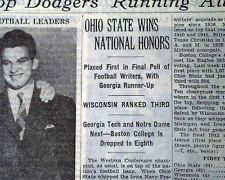
| at Kentucky (3-6-1) | 7-6 | |
| (Macon) Jacksonville NAS (9-3) | 14-0 | (#30-40) |
| Furman (3-6) | 40-7 | |
| (Memphis) Mississippi (2-7) | 48-13 | |
| Tulane (4-5) | 40-0 | #14 |
| at Cincinnati (8-2) | 35-13 | (#30-40) |
| Alabama (8-3) | 21-10 | #6 |
| (Jacksonville) Florida (3-7) | 75-0 | |
| Tennessee-Chattanooga (7-4) | 40-0 | |
| (Columbus) Auburn (6-4-1) | 13-27 | #13 |
| Georgia Tech (9-2) | 34-0 | #4 |
| Rose Bowl UCLA (7-4) | 9-0 | #18 |
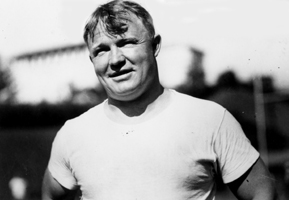 Georgia's
first finish in a top 25, had there been an AP top 25, would have been
1920, when they went 8-0-1. That team tied 5-2-2 Virginia, who was not
at all a top 25 team, but Georgia's straight record would likely have
gotten them ranked about #21-25 (I have them #21). The next year they got ambitious and
took on Harvard and Dartmouth, losing both games, but they tied 7-0-1
Vanderbilt to finish 7-2-1, and would have been ranked #21-25 again (I have them #23).
The coach during this time was Herman Stegeman, who went 20-6-1 in a
brief 3-year career.
Georgia's
first finish in a top 25, had there been an AP top 25, would have been
1920, when they went 8-0-1. That team tied 5-2-2 Virginia, who was not
at all a top 25 team, but Georgia's straight record would likely have
gotten them ranked about #21-25 (I have them #21). The next year they got ambitious and
took on Harvard and Dartmouth, losing both games, but they tied 7-0-1
Vanderbilt to finish 7-2-1, and would have been ranked #21-25 again (I have them #23).
The coach during this time was Herman Stegeman, who went 20-6-1 in a
brief 3-year career.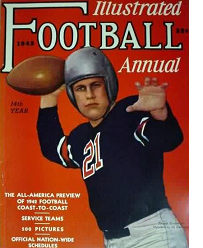
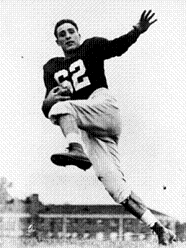
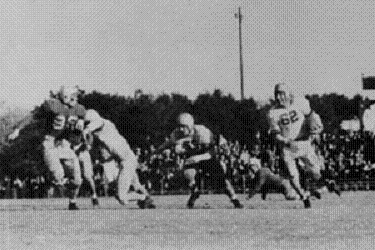
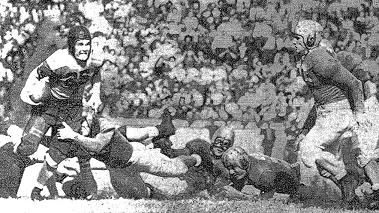
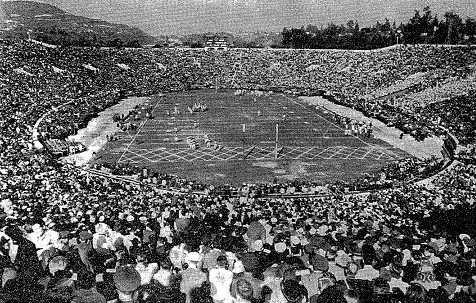
| Ohio State 9-1 | Georgia 11-1 | ||||||||||||||||||||||||||||||||||||||||||||
|---|---|---|---|---|---|---|---|---|---|---|---|---|---|---|---|---|---|---|---|---|---|---|---|---|---|---|---|---|---|---|---|---|---|---|---|---|---|---|---|---|---|---|---|---|---|
|
|
||||||||||||||||||||||||||||||||||||||||||||
| 1) Boand
(math system) College Football Researchers Association |
5.0 |
| 3) AP Poll National Championship Foundation Poling (math) Billingsley (math) |
4.9 |
| 7) DeVold (math) | 4.8 |
| 8) Litkenhous (math) | 4.4 |
| 9)
Sagarin-ELO
(math) Houlgate (math) |
4.2 |
| 11) Dunkel (math) | 3.74 |
| 12) Sagarin (math) | 3.67 |
| 13) Helms Foundation | 3.63 |
| 14) Dickinson (math) | 3.0 |
| 15) Williamson (math) | 2.6 |
| 1) Boand (math system) | 4.26 |
| 2) College Football Researchers Association | 4.22 |
| 3) Poling (math) | 4.11 |
| 4) Helms | 4.09 |
| 5) Sagarin-ELO (math) | 4.06 |
| 6) National Championship Foundation | 3.96 |
| 7) Dickinson (math) | 3.49 |
| 8) Houlgate (math) | 3.35 |
| 9) Billingsley (math) | 3.34 |
| 10) Sagarin (math) | 3.28 |
| 11) Parke Davis | 2.77 |
| 1) Houlgate (math system) | 4.5 |
| 2) Helms | 4.3 |
| 3) Parke Davis | 4.2 |
| 4) National Championship Foundation | 3.7 |
| 5) Billingsley (math) | 3.6 |